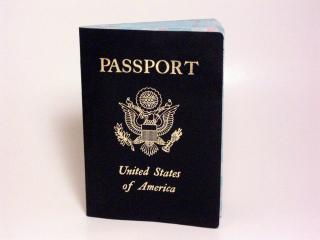- 11 April 2017
- The Migration Bureau
- No Comments

American Travellers will face toughter controls – why?
 American travellers to Europe this summer face much tougher controls as a result of a vote in the European Parliament.
American travellers to Europe this summer face much tougher controls as a result of a vote in the European Parliament.
British travellers can also expect much more red tape after the UK leaves the EU.
What exactly did the European Parliament vote for?
MEPs have demanded that the EU Commission makes visas mandatory for US visitors within two months, by suspending the current “visa waiver” for its nationals for a year.
“The EU Commission is legally obliged to take measures temporarily reintroducing visa requirements for US citizens, given that Washington still does not grant visa-free access to nationals of five EU countries,” said a communique from Brussels.
The trigger for the vote was the lack of reciprocity, with not all Europeans enjoying the relative freedom of movements that Americans have in Europe.
US citizens from any of the 50 states can go anywhere they want in the EU. But citizens of Bulgaria, Croatia, Cyprus, Poland and Romania cannot enter US territory without a visa.
 What happens now?
What happens now?
Lots of negotiations begin. While the MEPs regarded it as politically important to be seen to be criticising Washington’s refusal to bring those five countries into line, they also don’t want to damage American travellers — which would certainly happen if Americans needed visas to visit France, Spain, Italy and Britain. The deadline theoretically expires early in May, but actually all the US needs to do is say that it intends soon to harmonise the rules — to the benefit of the citizens of those five countries — and it is likely to be let off. Canada also imposes visa requirements on Bulgarian and Romanian citizens, but after it announced that they will be lifted on 1 December 2017, no further action was taken by the European Parliament.
For British travellers there’s been talk of having to apply for visas for Europe once Brexit happens?
That looks very likely to happen. What the European Parliament is saying about the US is really just a side-show compared with the ambitious plans for a European Travel Information and Authorisation System (ETIAS). This is aimed at nationalities who currently don’t need visas — which means American travellers now, and UK citizens after Brexit.
The plan is largely to emulate the Esta scheme that the US set up in the wake of 9/11 to evaluate prospective visitors. You will have to go online to enter all your personal data (name, date and place of birth, etc) and details of the travel document you plan to use. According to the latest proposals, you will also need to answer questions “relating to public health risks, criminal records, previous refusals of entry/an order to leave the territory of a Member State”.
Your data will then be compared with a whole range of security databases before a decision is made about whether you can apply for entry.
Anything else travellers need to know about?
Yes. An even broader package of proposals will see life at frontiers much more complicated for all non-EU nations at borders of the Schengen common travel area. The Commission is putting together an entry-exit system (EES) that “will apply to non-EU nationals, both those that require a visa and those that are exempted, travelling to the Schengen area.” Travellers will have to submit to fingerprint checks and to having their photograph taken.
Why is the EU putting up the barriers?
“We need to know who is crossing our borders,” says Jean-Claude Juncker, president of the European Commission. “This way we will know who is travelling to Europe before they even get here.”










